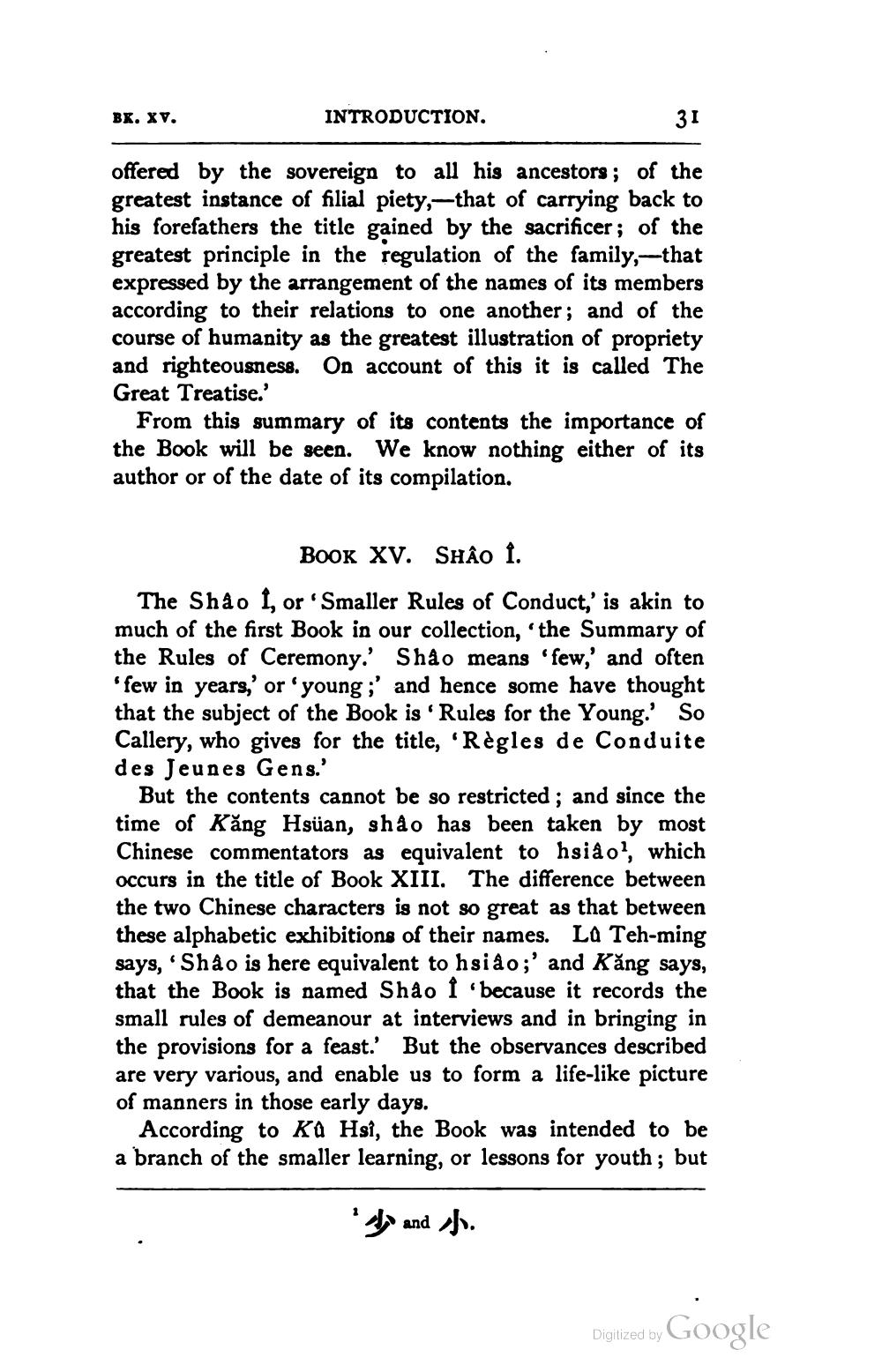________________
BK. XV.
INTRODUCTION.
31
offered by the sovereign to all his ancestors; of the greatest instance of filial piety,- that of carrying back to his forefathers the title gained by the sacrificer; of the greatest principle in the regulation of the family,—that expressed by the arrangement of the names of its members according to their relations to one another; and of the course of humanity as the greatest illustration of propriety and righteousness. On account of this it is called The Great Treatise.'
From this summary of its contents the importance of the Book will be seen. We know nothing either of its author or of the date of its compilation.
Book XV. SHẬo f. The Shảo I, or 'Smaller Rules of Conduct,' is akin to much of the first Book in our collection, 'the Summary of the Rules of Ceremony.' Shão means 'few,' and often 'few in years,' or young ;' and hence some have thought that the subject of the Book is 'Rules for the Young. So Callery, who gives for the title, 'Règles de Conduite des Jeunes Gens.
But the contents cannot be so restricted; and since the time of Kăng Hsuan, shảo has been taken by most Chinese commentators as equivalent to hsiaol, which occurs in the title of Book XIII. The difference between the two Chinese characters is not so great as that between these alphabetic exhibitions of their names. La Teh-ming says, 'Shâo is here equivalent to hsiao;' and Kăng says, that the Book is named Shâo i because it records the small rules of demeanour at interviews and in bringing in the provisions for a feast.' But the observances described are very various, and enable us to form a life-like picture of manners in those early days.
According to Ka Hsi, the Book was intended to be a branch of the smaller learning, or lessons for youth; but
do and sh.
Digitized by Google




